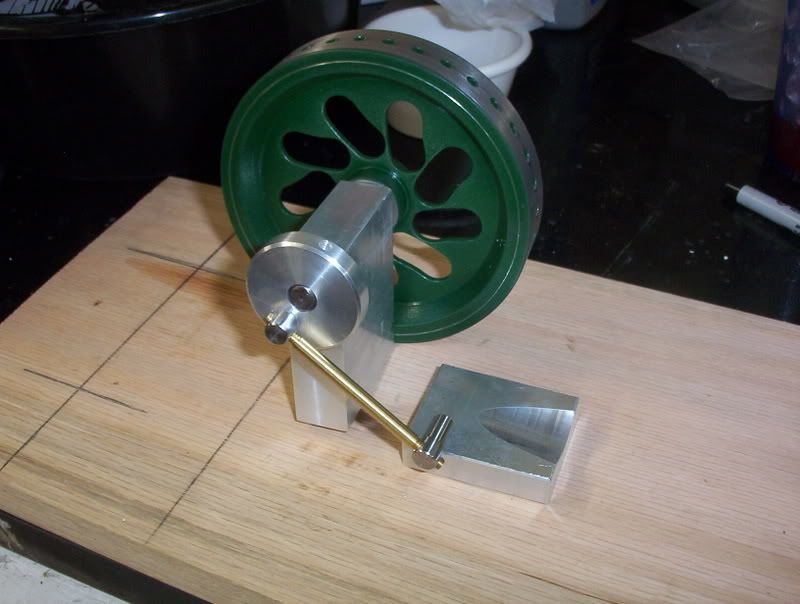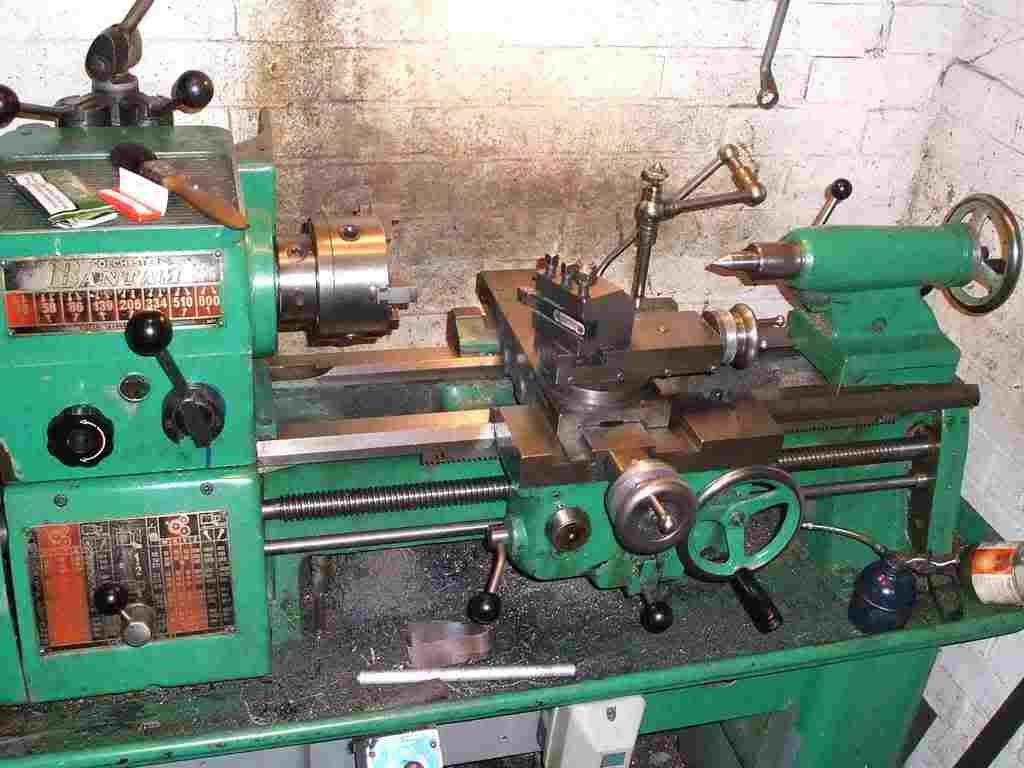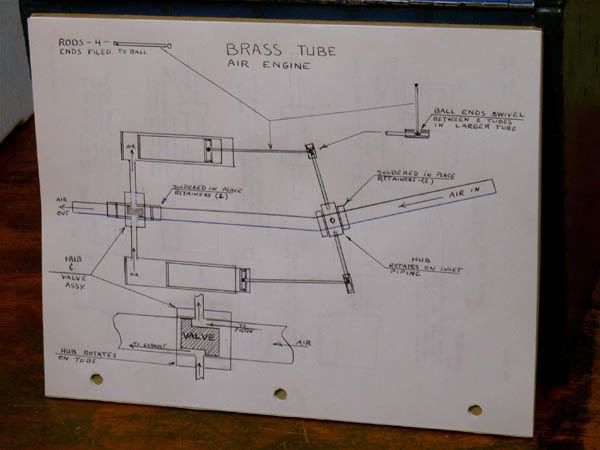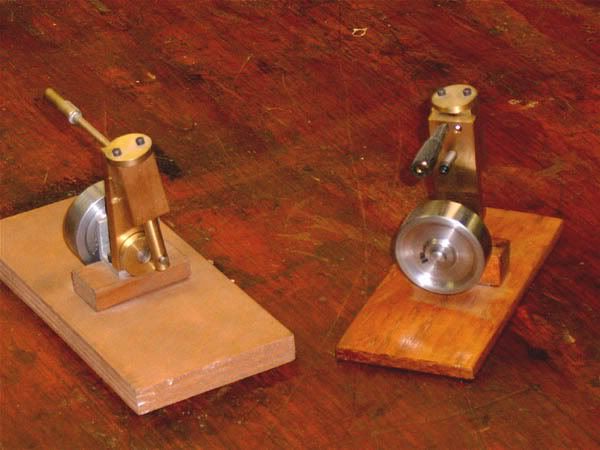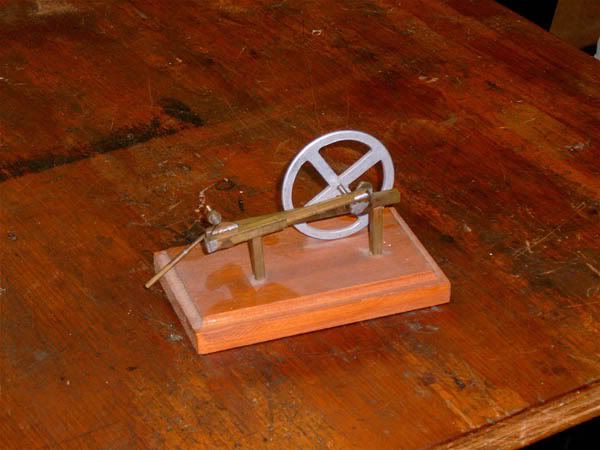HI
Well after a bit of a break for other work its time for me to extract the thumbs and start the soldering on the boiler.
Firs job is always soldering the throat plate to the boiler barrel. The throat plate is the forward most of the boiler plates and effectively forms the most important jont on te boiler. As the boiler barrel is the chassis of the engine it can be seen that the joint between the throat plate and the boiler tube comes under a lot of stress both compression and extension. For this reason its important to build up a good fillet of silver solder and ensure perfect penetration of the joint.
As always in silver soldering it is most important to have the copper as clean as is possible. This will always involve pickeling in the sulphuric and then rubbing with wire wool. As soon as the copper has been wire wooled run a bead of flux around the clean copper in the location you want the solder to flow.
Settng the assembly on a few fire bricks check that the tube is square on to the throat plate. Once your happy that the plate will go on in its correct location run some more flux around the joint. At this stage cut short bits of silver solder maybe ¼ inch and cut enough to go all the way around the joint. Lay the cut solder as close as you can to the joint and dab some flux over the solder.
Given the size of the tube im soldering here 10 gauge 5 inch OD tube. I will have to add a lot of heat from the inside of the boiler tube. The easiest way to do this is to fill the tube with charcoal to about 3 inches above the joint thats being soldered. As the boiler is standing on its throat plate end during this soldering stage once the charcoal is alight it will tend to use the upturned boiler as a chimney and draw rather a nice fire. Along with the two propane torches this will give more than enough heat to solder the joint.
At this point il admit I forgot to take pictures of the joint being made. Most of the following joints are done the same basic way but still I wish I had remembered.
These to pictures show the finished joint with a good fillet on the first picture and full penetration on the second image.
All thats required after the joint is made will be a lite run in the acid to pickle off the flux from the joint. Before the outer wrapper is put on the flahges will be pickled and poished once again.
So onto the next part of the build, the tubes being put into the firebox tube plate.
Possibly the hardest part of this job is finding ways to hold the boiler oarts during the soldering operation. As can be seen from the first image it can be a bit of a lash up but as long as the job is held well and safely go with what works.
As each tube is placed into the pickled and polished tube plate the tube is polished in the lathe with sotch bright for about an inch up the tube from the joint.
Also the tube plate and tubes are fluxed as each tube goes in.
Once all the tubes are in and ready just run a little extra flux around each tube to be sure and safe.
Setting the silver solder on in short bits lets you surround each tube and almost flood the tube holes as soon as melt is achieved. Heating should never be directly onto the silver solder. It should melt from the heat of the metal rather than the flame. This is the best clue that a good hot joint is being formed. Also the solder will flow towards the heat.
Rodding a little extra solder on is fine as long as again the melt is caused by the heat in the metal rather than the flame.
Start by heating the tubes slowly bringing them up to the point that the flux bubbles and drys out. Never play the flame directly onto the wet flux it will tend to boil the flux away from the joint.
As the assembly starts to turn from clean copper to black you know the heat is enough to get seriouse. At this point I start the second torch and heat all around the underside of the joint. Try to play the flames in between the tube and keep moving all the time so as to heat evenly.
As soon as the solder starts to melt watch the way its flowing if it seems to be flowing away from the tubes get some more heat into the tube cluster. Once the solder is fully melted and has flowed through the joint check to see if any extra rod is required. It almost always is.
As soon as you see a good fillet around all the tubes cut the heat and sit back. I have a smoke and a coffee till the bits are cool enough to pick up. This is the time to again pickle to remove the flux.
In the acid
Next job will be the firebox wrappers and fire hole ring, lots a heat and swearing on this one.
I wil try to upload the next part Wednesday this week.
Cheers Kevin





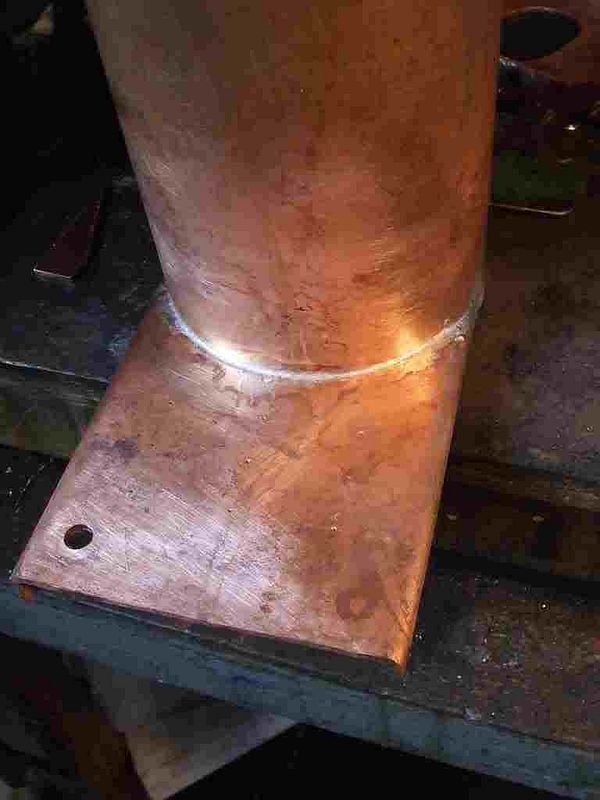
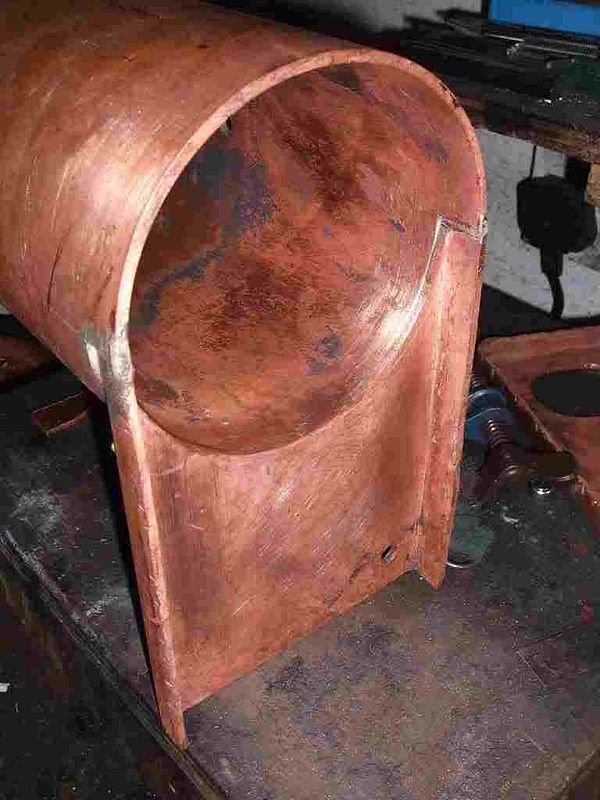
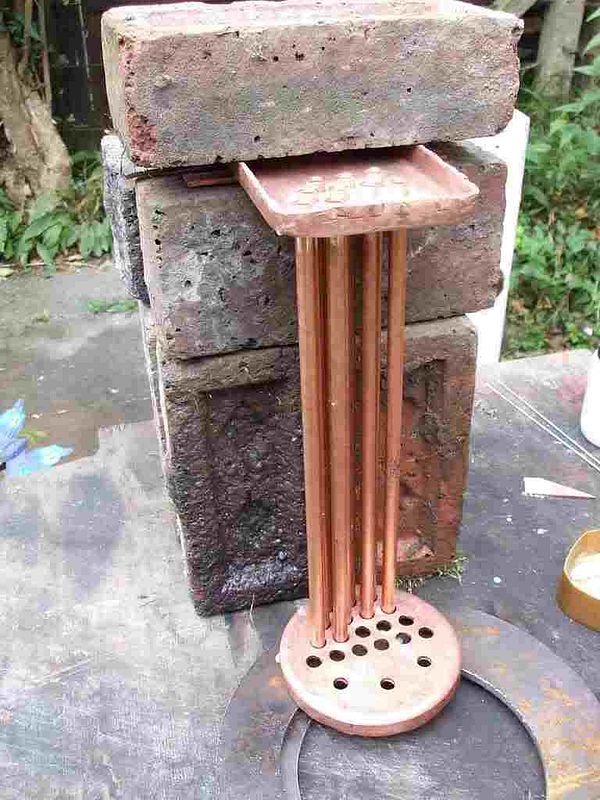
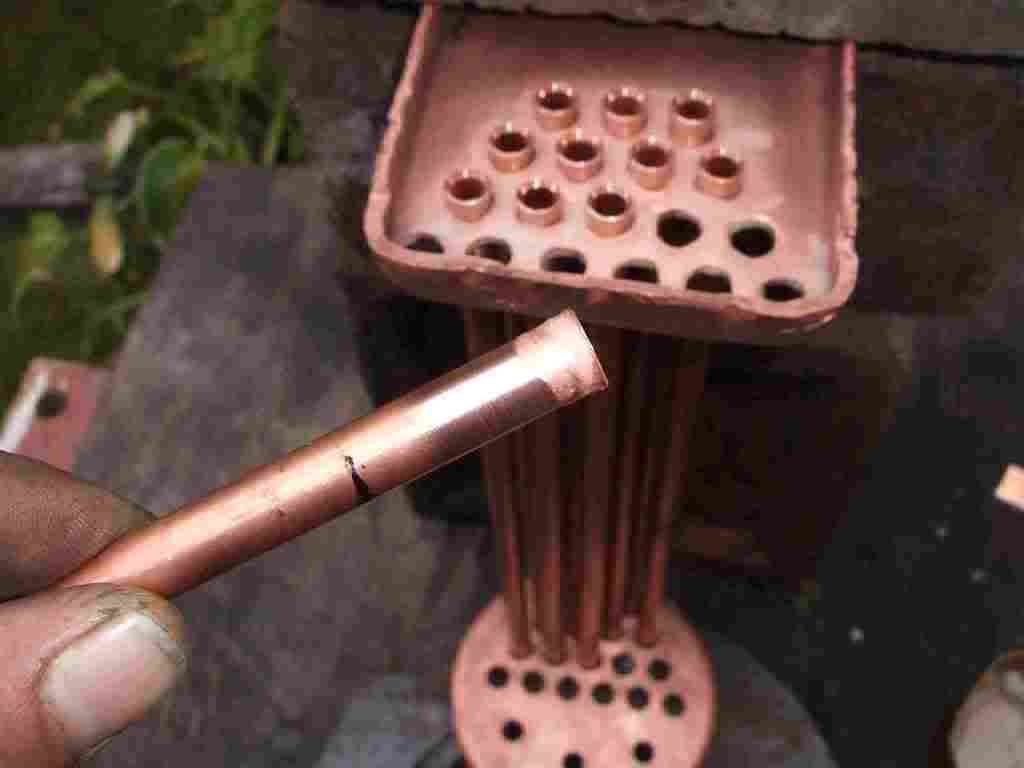
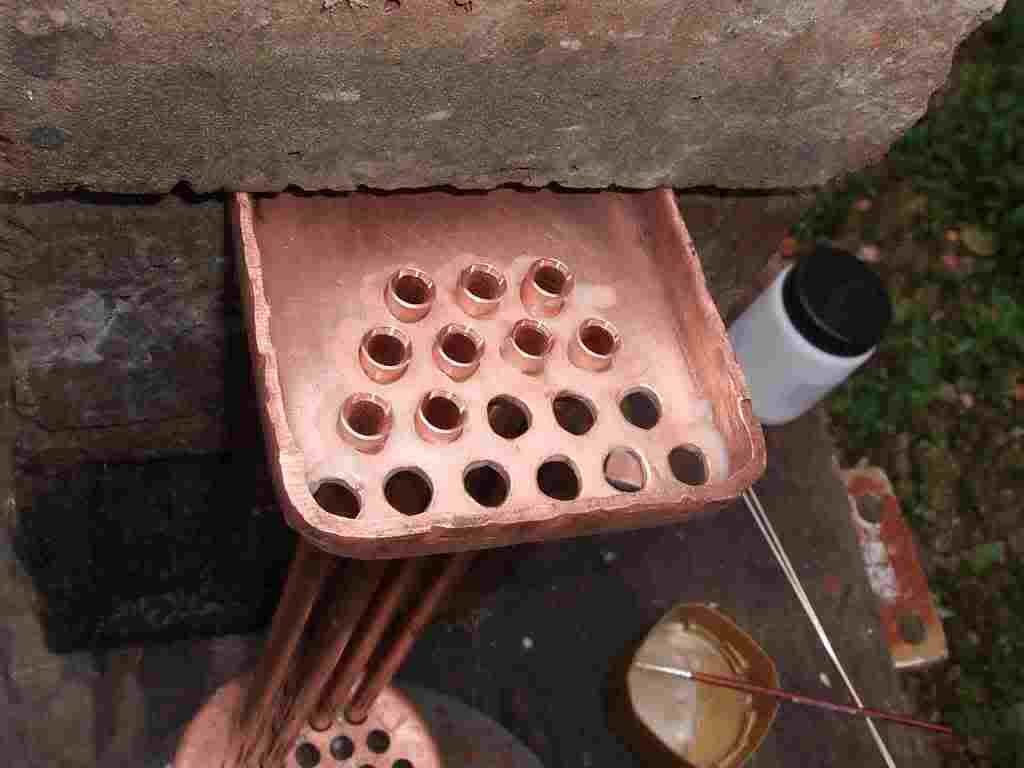
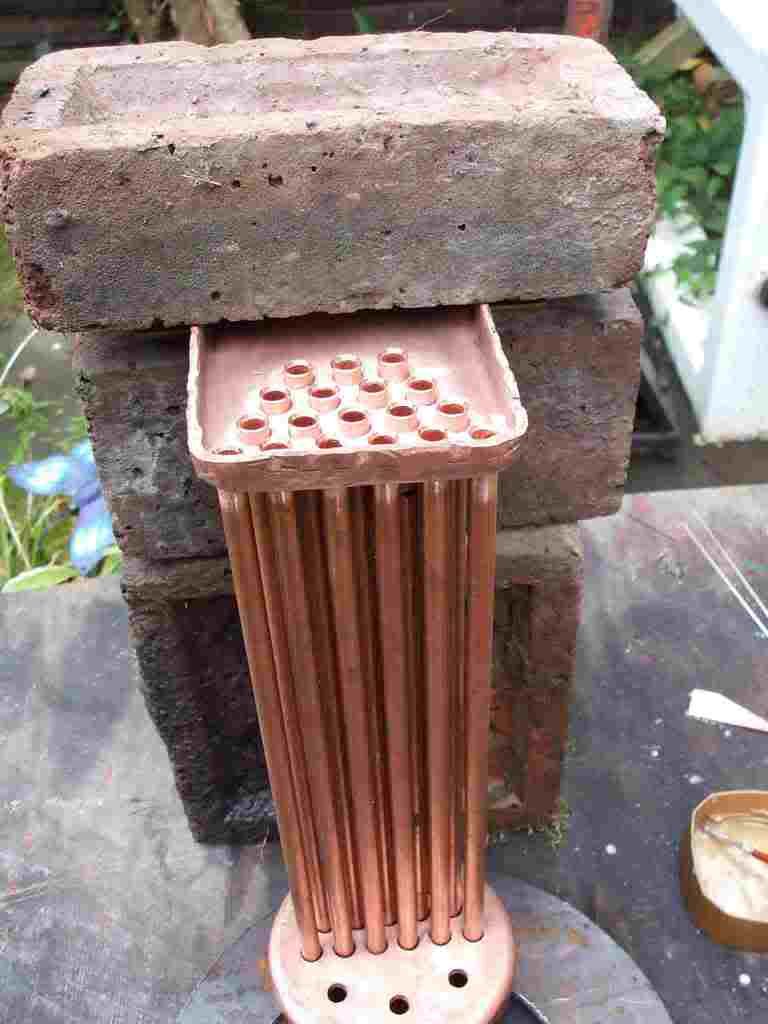
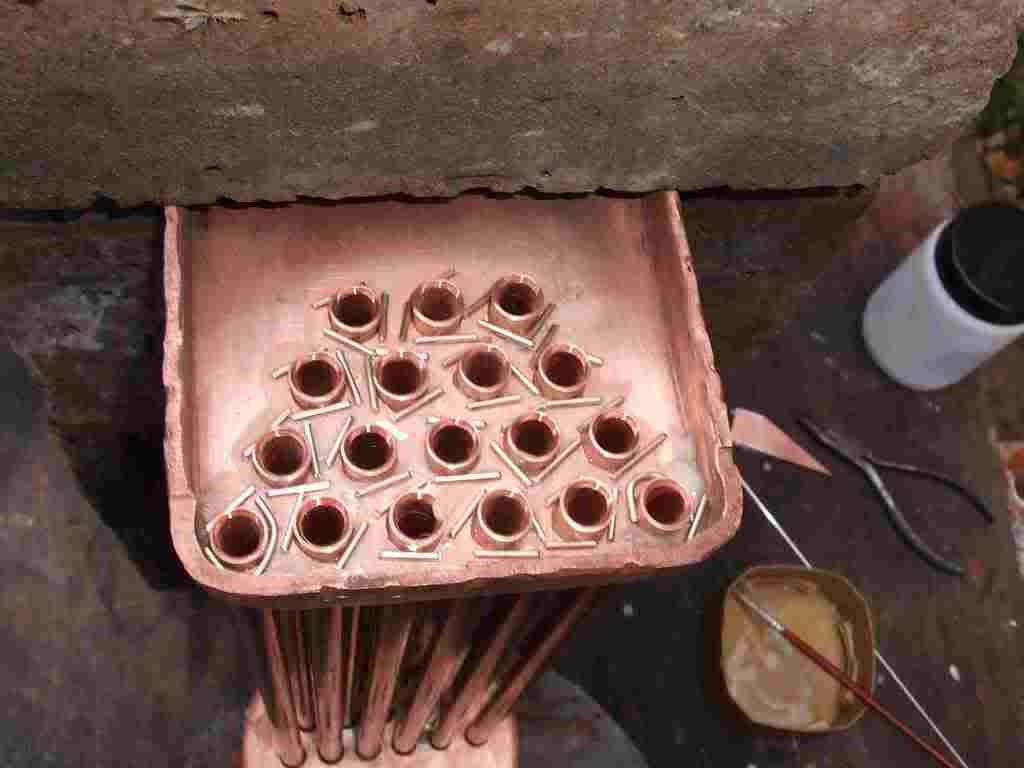
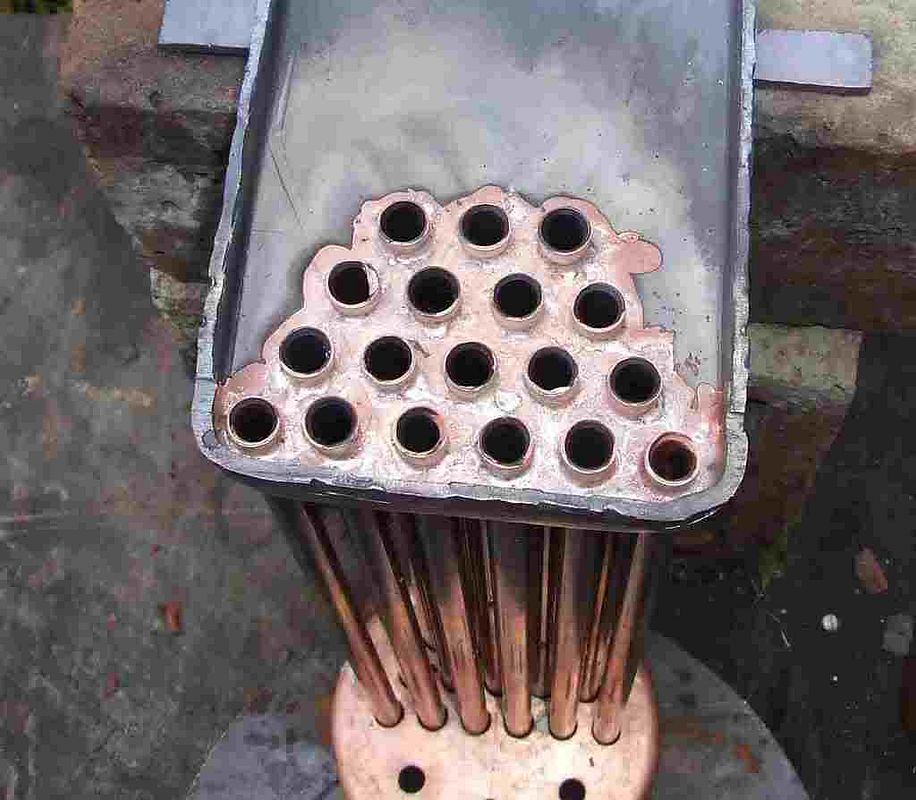
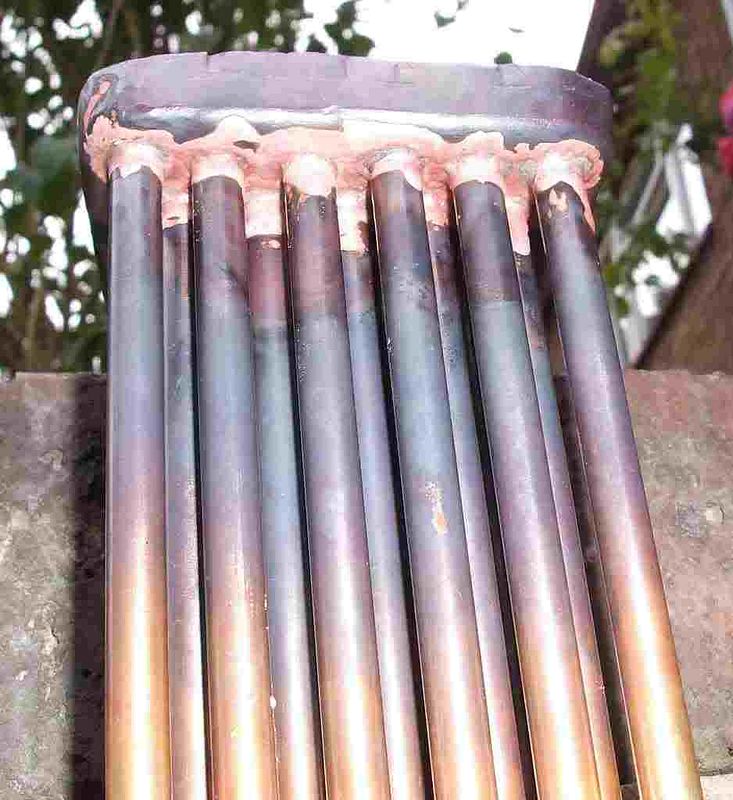

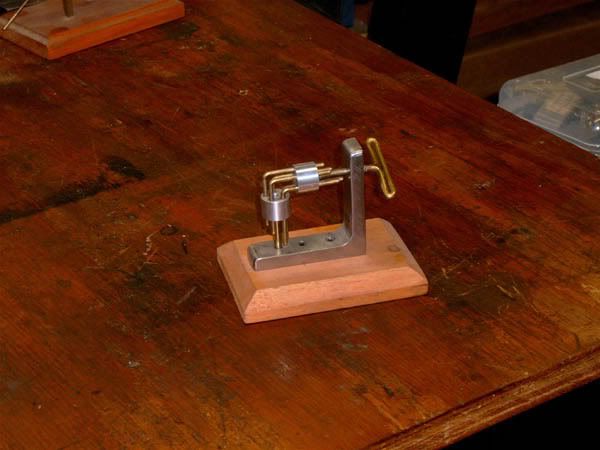










![DreamPlan Home Design and Landscaping Software Free for Windows [PC Download]](https://m.media-amazon.com/images/I/51kvZH2dVLL._SL500_.jpg)


































